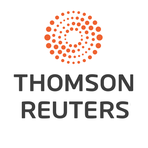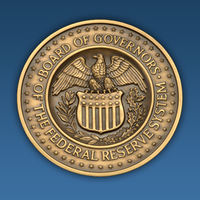The Dollar Dilemma: Europe’s Uncertain Financial Future Amidst U.S. Turbulence
March 27, 2025, 4:15 am

Location: United States, Kansas, Winfield
Employees: 1001-5000
Founded date: 2011
Total raised: $820K
In the intricate dance of global finance, the U.S. dollar has long been the lead partner. But as the Trump administration reshapes international relations, European officials are left questioning their reliance on the Federal Reserve. The once-solid foundation of dollar funding is now cracking, revealing vulnerabilities that could reshape the financial landscape.
The dollar is the world’s currency. It’s the lifeblood of trade, the anchor of stability. But recent shifts in U.S. policy have cast shadows over this certainty. European central bankers are whispering doubts. Can they still count on the Fed in times of crisis? The answer is murky.
European officials are grappling with a new reality. The Trump administration’s unpredictable policies have shaken their trust. Tariffs, trade wars, and a shift towards protectionism have raised alarms. The Fed has always been a safety net, a backstop during financial storms. But what if that net frays?
Informal discussions among European central banking officials reveal a growing concern. They are contemplating alternatives to the Fed. In the past, the Fed’s dollar funding was a given. Now, it feels like a gamble. The specter of U.S. pressure on the Fed looms large. What if the Fed is forced to suspend its backstops? The consequences would be dire.
The U.S. dollar dominates global reserves, holding a staggering 57% of known central bank assets. It’s the currency of choice for trade and investment. But the landscape is shifting. As Europe reassesses its military and economic ties with the U.S., the question arises: will they continue to hold dollars, or will they pivot towards the euro?
The euro, while a distant second in reserve currency status, has potential. It commands a steady 20% of global reserves. The European Central Bank (ECB) is keenly aware of this. They are exploring ways to bolster the euro’s standing. A digital euro could be on the horizon, a tool to enhance its appeal.
Yet, the path is fraught with challenges. The eurozone’s fragmented debt markets and incomplete banking union hinder its ascent. European leaders are aware of these hurdles. They are pushing for greater fiscal unity and joint borrowing. This could create a more robust euro, one that can stand up to the dollar.
Meanwhile, the geopolitical landscape is shifting. The fallout from the Russia-Ukraine conflict has prompted Europe to rethink its defense strategy. As military alliances evolve, so too will financial relationships. If Europe can bolster its military independence, it may also reconsider its currency reserves.
The U.S. dollar’s dominance has been built on trust and military alliances. But as transatlantic ties fray, that trust is eroding. European officials are increasingly wary of relying on a currency tied to a government that seems to prioritize isolationism. The risk of dollar divestment is real. It could amount to $800 billion, a significant dent in the dollar’s reserve status.
As Europe grapples with these uncertainties, the implications for global markets are profound. A shift away from the dollar could lead to increased volatility. Investors may seek refuge in the euro, pushing its value higher. This could create a feedback loop, further entrenching the euro’s position as a viable alternative.
The Fed’s independence is not in question. However, the political climate in the U.S. raises concerns. European officials fear that the Trump administration may exert pressure on the Fed, leading to a scenario where dollar funding is curtailed. This could have catastrophic effects on global markets, triggering a flight to safety.
The recent discussions among European officials are not just idle chatter. They reflect a growing recognition of the need for alternatives. The Fed has been a reliable partner, but the landscape is changing. As Europe contemplates its financial future, it must weigh the risks and rewards of continued reliance on the dollar.
In the end, the dollar remains a powerful force. But its grip is loosening. Europe is at a crossroads. The decisions made today will shape the financial landscape for years to come. The euro could rise to prominence, but only if Europe can navigate the complexities of its own economic and political landscape.
As the world watches, the stakes are high. The dollar’s dominance is being challenged, and the euro is poised to seize the moment. The question remains: will Europe rise to the occasion, or will it falter in the face of uncertainty? The answer lies in the balance of power, trust, and the ever-evolving dance of global finance.
The dollar is the world’s currency. It’s the lifeblood of trade, the anchor of stability. But recent shifts in U.S. policy have cast shadows over this certainty. European central bankers are whispering doubts. Can they still count on the Fed in times of crisis? The answer is murky.
European officials are grappling with a new reality. The Trump administration’s unpredictable policies have shaken their trust. Tariffs, trade wars, and a shift towards protectionism have raised alarms. The Fed has always been a safety net, a backstop during financial storms. But what if that net frays?
Informal discussions among European central banking officials reveal a growing concern. They are contemplating alternatives to the Fed. In the past, the Fed’s dollar funding was a given. Now, it feels like a gamble. The specter of U.S. pressure on the Fed looms large. What if the Fed is forced to suspend its backstops? The consequences would be dire.
The U.S. dollar dominates global reserves, holding a staggering 57% of known central bank assets. It’s the currency of choice for trade and investment. But the landscape is shifting. As Europe reassesses its military and economic ties with the U.S., the question arises: will they continue to hold dollars, or will they pivot towards the euro?
The euro, while a distant second in reserve currency status, has potential. It commands a steady 20% of global reserves. The European Central Bank (ECB) is keenly aware of this. They are exploring ways to bolster the euro’s standing. A digital euro could be on the horizon, a tool to enhance its appeal.
Yet, the path is fraught with challenges. The eurozone’s fragmented debt markets and incomplete banking union hinder its ascent. European leaders are aware of these hurdles. They are pushing for greater fiscal unity and joint borrowing. This could create a more robust euro, one that can stand up to the dollar.
Meanwhile, the geopolitical landscape is shifting. The fallout from the Russia-Ukraine conflict has prompted Europe to rethink its defense strategy. As military alliances evolve, so too will financial relationships. If Europe can bolster its military independence, it may also reconsider its currency reserves.
The U.S. dollar’s dominance has been built on trust and military alliances. But as transatlantic ties fray, that trust is eroding. European officials are increasingly wary of relying on a currency tied to a government that seems to prioritize isolationism. The risk of dollar divestment is real. It could amount to $800 billion, a significant dent in the dollar’s reserve status.
As Europe grapples with these uncertainties, the implications for global markets are profound. A shift away from the dollar could lead to increased volatility. Investors may seek refuge in the euro, pushing its value higher. This could create a feedback loop, further entrenching the euro’s position as a viable alternative.
The Fed’s independence is not in question. However, the political climate in the U.S. raises concerns. European officials fear that the Trump administration may exert pressure on the Fed, leading to a scenario where dollar funding is curtailed. This could have catastrophic effects on global markets, triggering a flight to safety.
The recent discussions among European officials are not just idle chatter. They reflect a growing recognition of the need for alternatives. The Fed has been a reliable partner, but the landscape is changing. As Europe contemplates its financial future, it must weigh the risks and rewards of continued reliance on the dollar.
In the end, the dollar remains a powerful force. But its grip is loosening. Europe is at a crossroads. The decisions made today will shape the financial landscape for years to come. The euro could rise to prominence, but only if Europe can navigate the complexities of its own economic and political landscape.
As the world watches, the stakes are high. The dollar’s dominance is being challenged, and the euro is poised to seize the moment. The question remains: will Europe rise to the occasion, or will it falter in the face of uncertainty? The answer lies in the balance of power, trust, and the ever-evolving dance of global finance.

